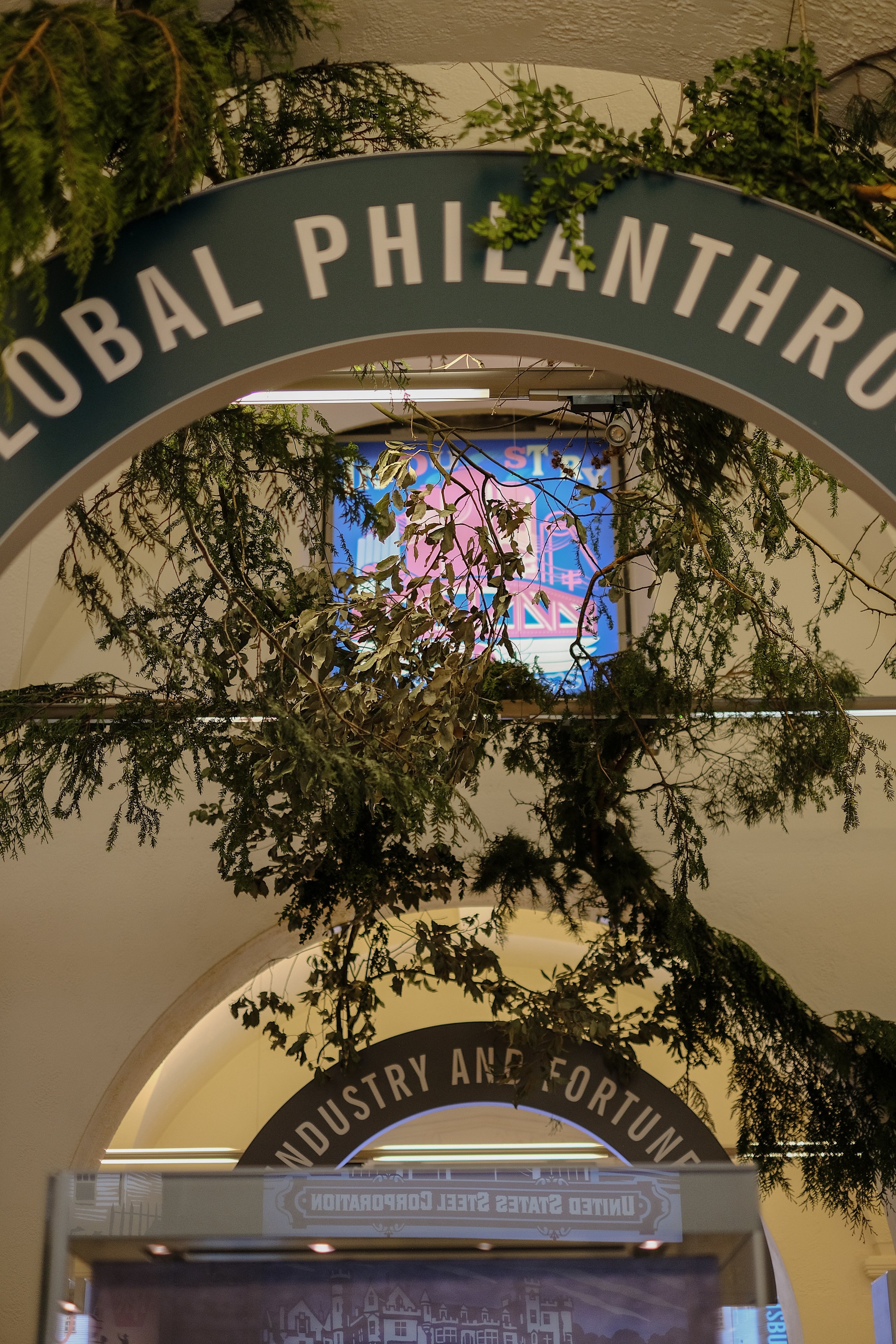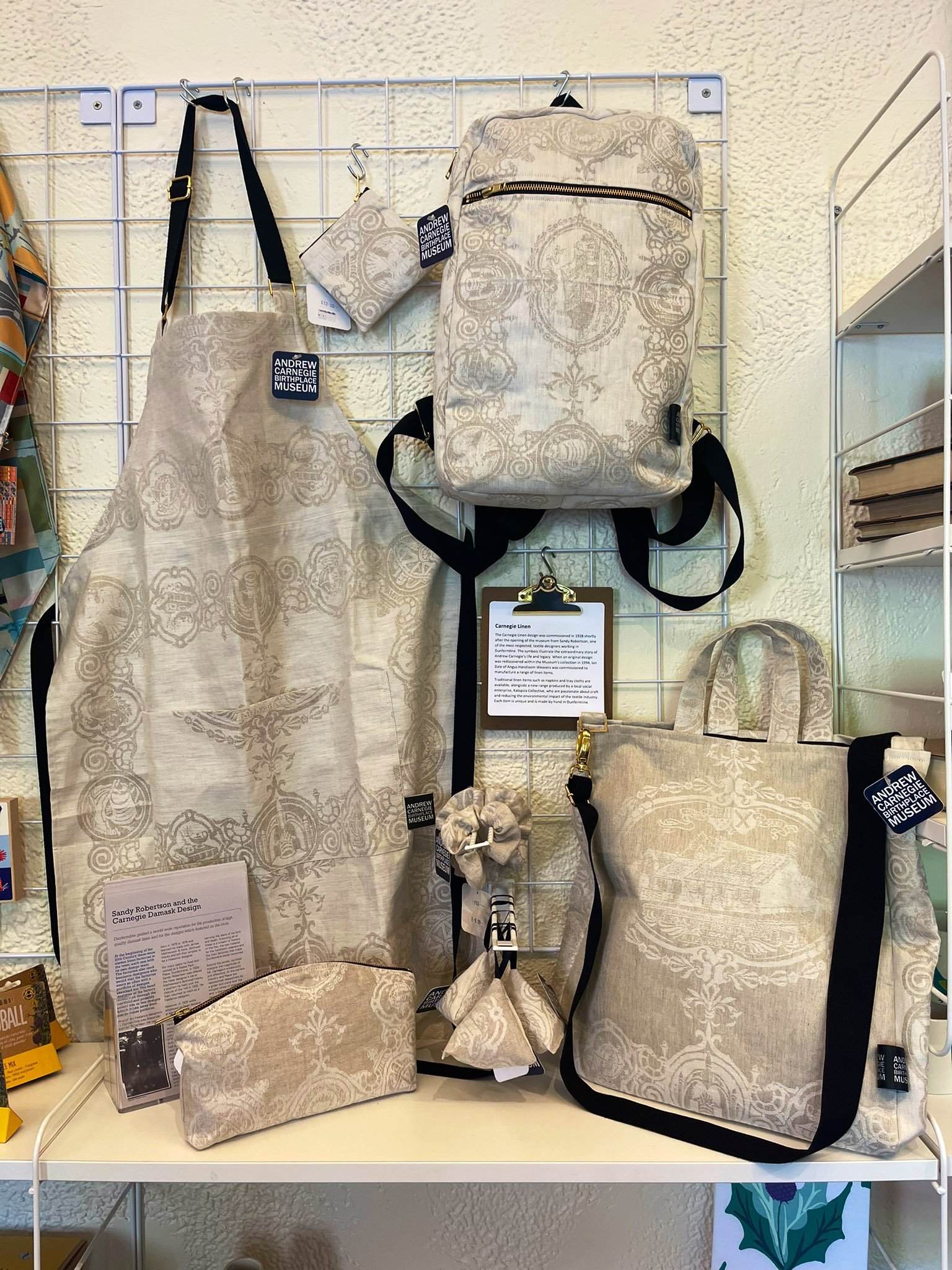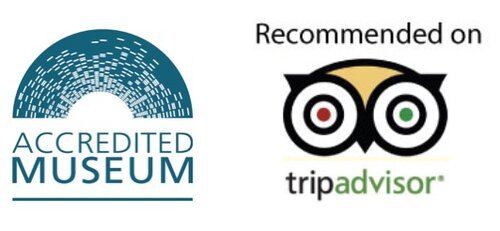In May we had two students from Dunfermline High School, Ray and Ethan spend 15 hours with Mark at the Museum. Here’re some notes of their experience and photos from their time, we have added some context information in brackets!
We got welcomed in and then we had to fill some paperwork out [to make Ray and Ethan official volunteers for the museum during their work experience].
Then we had a chance to go and explore the museum ourselves looking for our favourite objects.
Then we went up to a locked room to move legs [from a temporary display case] and to think where to put the legs [to maximise the storage cupboard space].
We had to move the [hand] sanitiser dispensers up in to the [storage] room which we had to think how they would all fit, then we had lunch [they had earned a break after the physical work].
Figure 1. Storeroom with hand sanitisers.
Then we went to the glen with the kids from Queen Anne High School, [these students visit every Monday to volunteer to build confidence and we share what working in a museum is all about]. We tried out different activities and rate them for the appropriate age group for the activities, [these are new Activity Bags for families to borrow to take to The Glen for a boost of wellbeing for everyone in the family].
On another day we [helped] create a display on Pittencrieff Park in [a temporary display case] in the museum, then we had to go and take a tourist board sign down from the front of the museum since it’s no longer valid, [VisitScotland Quality Assurance star rating is no longer supported and a new scheme is now assessing the museum].
Figure 2. Temporary exhibition case with objects telling the story of Pittencrieff Park.
Figure 3. Map of Scotland, showing red dots of where some visitors have come from.
Figure 4. Map corner for visitors to place a sticker on where they call home.
If you’d like do some work experience with us, please drop an email to info@carnegiebirthplace.com letting us know your details and why you are interested.








































